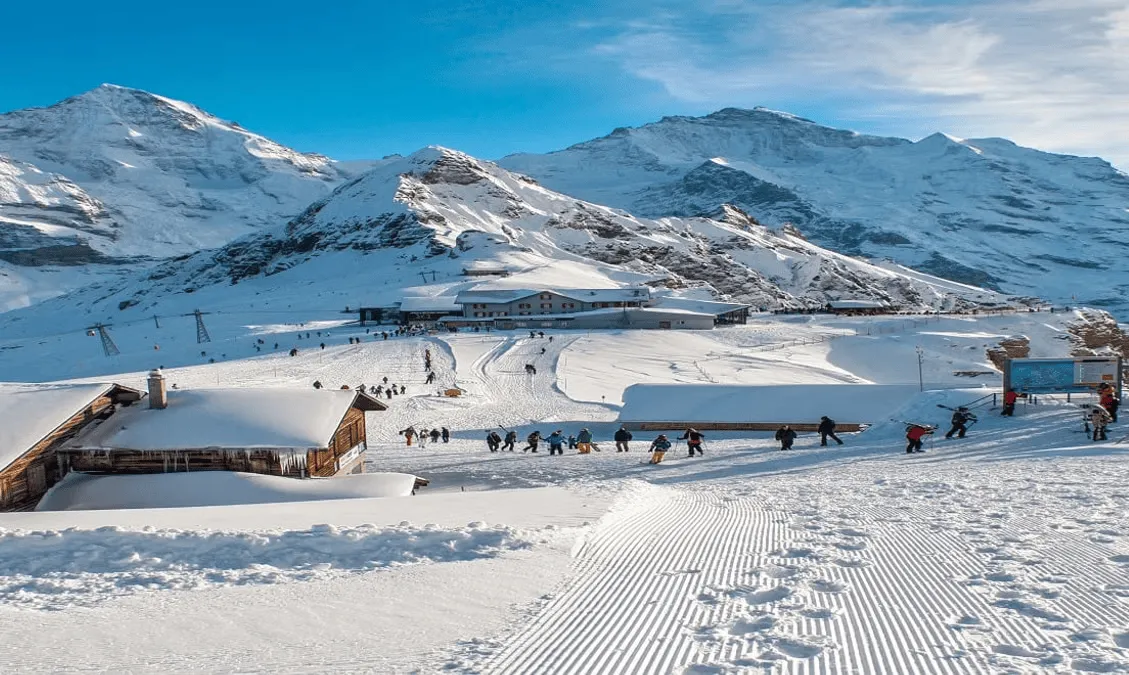
Posted by: Akhil
Best Time to Visit Kashmir: A Seasonal Guide
Hello, fellow travelers! Welcome to the paradise on earth—Kashmir. A place that has captivated travelers for centuries, Kashmir is known for its unmatched beauty and diversity, nestled in the lap of the Himalayas. Are you ready to explore every season and discover the perfect time to visit this breathtaking destination? Let’s dive into the details and explore the pros and cons of each season!
Understanding Kashmir’s Seasons
Kashmir experiences four distinct seasons—spring, summer, autumn, and winter—each offering a unique charm and experience. To truly enjoy the wonders of this region, it’s essential to time your visit wisely. This guide will help you determine the best time to visit based on your interests and preferences.
Spring: A Blooming Paradise
- Temperature: 10°C to 20°C
- Weather: Light showers are common, so carry a rain jacket or umbrella.
Spring (March to May) is an ideal time to visit Kashmir as winter’s snow begins to melt, awakening the valley with vibrant colors. Srinagar’s Tulip Garden, the largest in Asia, is a must-visit during this time. You can also explore blossoming almond and cherry orchards, take a picnic by the lake, or stroll through the Mughal Gardens.
For adventure enthusiasts, trekking in the surrounding hills is a pleasure. Whether you're a nature lover, photographer, or someone seeking peace, spring is the perfect season to experience the magic of Kashmir.
Summer: A Refreshing Retreat
- Temperature: 15°C to 30°C
- Weather: Occasional showers in higher altitudes, but overall minimal rainfall.
During the summer months (June to August), Kashmir offers a cool escape from the scorching heat of the plains. This season is perfect for outdoor activities like trekking, camping, and water sports. A Shikara ride on Dal Lake, exploring the Mughal Gardens, and visiting the floating vegetable market are some must-do activities.
Trekking in the mountains, cruising on the lakes, or exploring ancient temples—summer offers something for every traveler.
Autumn: A Canvas of Colors
- Temperature: 10°C to 25°C
- Weather: Layered clothing is recommended as temperatures vary throughout the day.
From September to November, Kashmir transforms into a breathtaking landscape of red, orange, and gold hues. This is the perfect time for hiking, photography, and nature walks. The crisp air and clear skies create a delightful outdoor experience.
Autumn is also a time of festivities. The Navroz Festival, celebrated by the Kashmiri Pandit community, marks the beginning of the Kashmiri New Year. Other festivals like the Harvest Festival (Baisakhi) add to the vibrant atmosphere. Whether you're admiring the changing foliage or immersing yourself in local traditions, autumn in Kashmir is magical.
Winter: A Snowy Wonderland
- Temperature: -2°C to 10°C
- Weather: Heavy snowfall, especially in higher elevations. Pack lip balm, moisturizer, and sunscreen to protect against the harsh winter conditions.
From December to February, Kashmir transforms into a snow-covered wonderland, offering the perfect setting for winter sports. Gulmarg and Pahalgam become hubs for skiing, snowboarding, and snowshoeing. Travelers should pack warm clothing, including heavy-duty winter jackets, insulated pants, thermal layers, woolen hats, gloves, and waterproof boots.
Winter in Kashmir is an unforgettable experience for adventure seekers and nature lovers alike.
Peak Season vs. Off-Season: Pros & Cons
Peak Season (June to August - Summer)
Advantages:
- Pleasant weather, ideal for outdoor activities.
- Lively atmosphere with many tourists.
- Wide range of activities available.
Disadvantages:
- Crowded tourist spots with longer wait times.
- Higher accommodation and tour prices.
- Need for advance bookings due to high demand.
Off-Season (December to February - Winter)
Advantages:
- Quieter and more peaceful experience.
- Ideal for winter sports.
- More budget-friendly travel packages.
Disadvantages:
- Extremely cold temperatures.
- Some attractions may be inaccessible due to snowfall.
- Limited availability of accommodations and transport.
Tips to Avoid Crowds & Enjoy Quieter Periods:
- Visit popular attractions early in the morning or late in the afternoon.
- Choose homestays or guesthouses in remote areas for a more authentic experience.
- Explore lesser-known locations and hidden gems.
Festivals & Events: Experience Kashmir’s Culture
Kashmir’s festivals and events provide a deeper insight into its rich heritage. Here are some must-experience celebrations:
- Tulip Festival (April) – Witness the stunning tulip blooms at the Indira Gandhi Memorial Tulip Garden in Srinagar.
- Shikara Festival (June) – Celebrate Kashmir’s traditional wooden boats with colorful races and cultural performances on Dal Lake.
- Hemis Festival (July) – Experience Ladakh’s spiritual and cultural traditions through masked dances and vibrant processions at the Hemis Monastery.
- Navroz Festival (March) – Marking the Kashmiri New Year, this festival showcases unique customs and traditions of the Kashmiri Pandit community.
Plan your visit around these festivals to truly experience the essence of Kashmiri culture and create unforgettable memories.
Conclusion: When Should You Visit Kashmir?
Kashmir is a destination that offers something special in every season. Whether you’re drawn to the blooming landscapes of spring, the adventure-filled summers, the mesmerizing autumn colors, or the snowy winter wonderland, there’s no wrong time to visit. By considering your interests and priorities, you can plan the perfect trip and make the most of your experience in this paradise on earth.
So, pack your bags and get ready for an unforgettable journey through Kashmir’s valleys and peaks. No matter when you go, the beauty of Kashmir will leave you spellbound!










